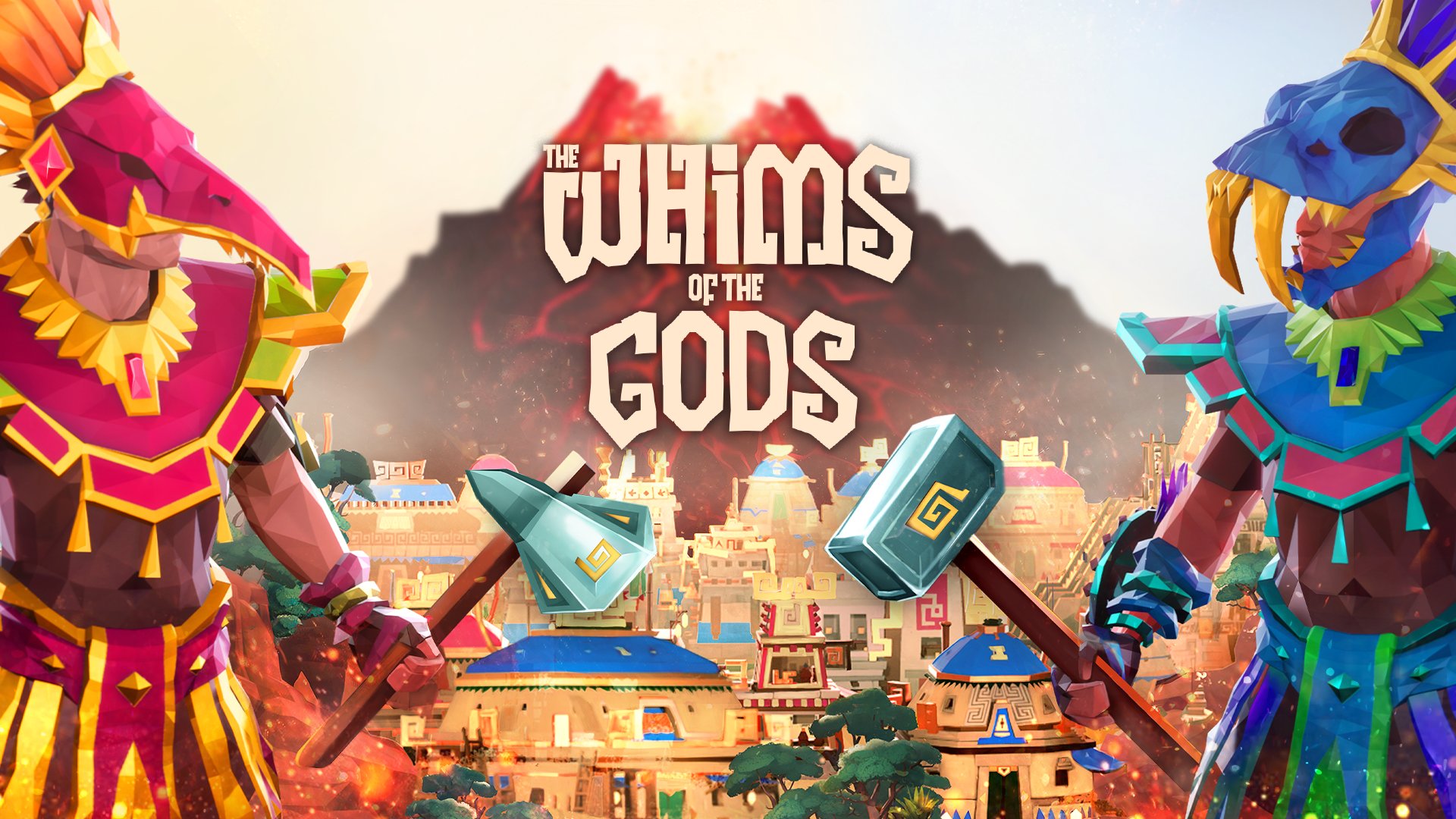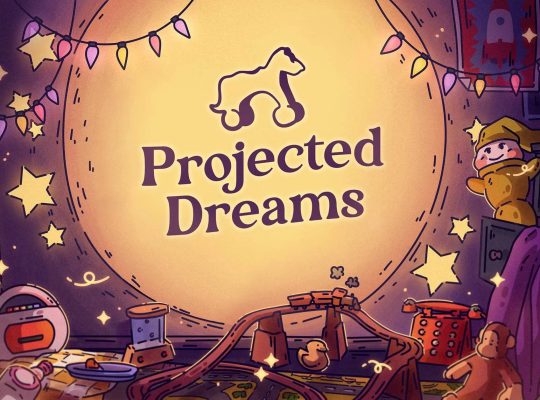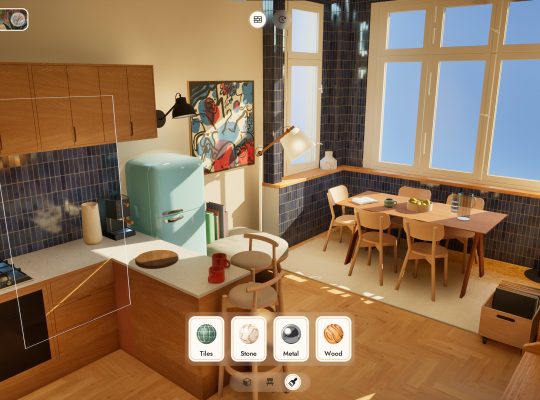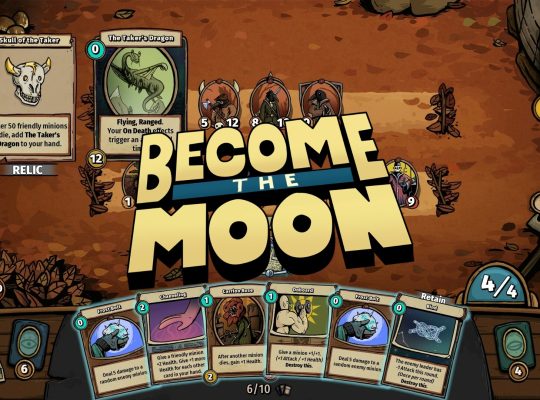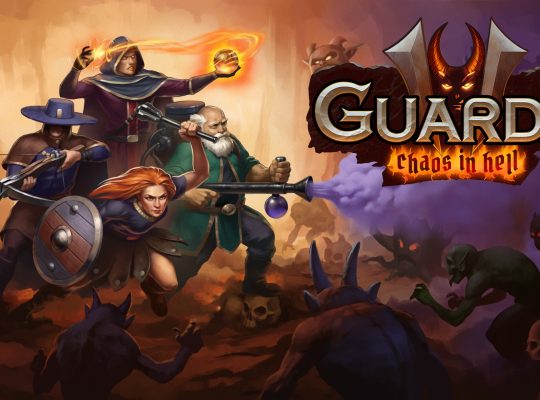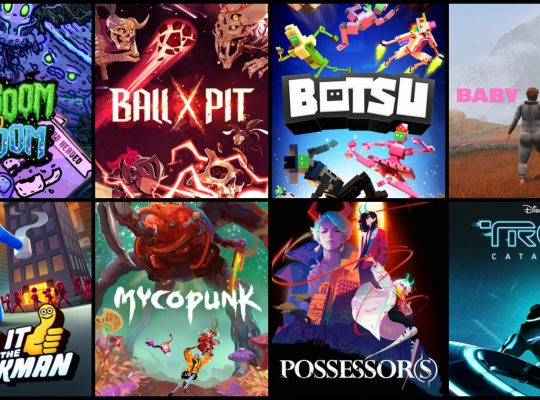City-building games, despite relying on similar patterns and mechanics, can offer quite a wide range of worlds and stories. Nevertheless, most of them are still centered around single-player strategy. But what if I told you there is a city-builder with a co-op feature, auto-battler mechanics and transcendent narrative leading to multiple endings? You’ll find all of that in The Whims of the Gods from developer Juggler Games and publisher PJ Games. Although the game is supposed to launch in the third quarter of 2025 , we had a chance to try out the version released for the second public playtests that took place in February.
Unique city-builder determined to redefine the genre
The Whims of the Gods is a city-builder designed with an online co-op mode in mind. The goal seems quite simple: you have to obtain resources, build an ancient city and meet the needs of its inhabitants. However, when your plans are dependent on the fantasies of the Ancient Whimsical Gods, the situation quickly becomes much more complicated.
In this case, managing a growing civilization involves creating complex production systems, battling frightening enemies and even adapting to a mystical calendar. It is your chance to join forces with another player in order to create a thriving metropolis. If you wish to gain more insight into the details of this game, make sure to check out our interview with the devs here.
I got to play the game twice: first in co-op mode with one of the testers from Juggler Games team, then a second time by myself. While in both cases my gameplay was centered around completing consecutive tasks from a tutorial, the impressions I got from these two playthroughs are quite different. But before we get to that part, let’s first take a look at the basics.




The gameplay loop is surprisingly fun
The game begins with an intro dialogue between four ancient deities who are discussing their previous creations and failed trials. Now they came up with a new idea: placing humans on an island full of dangers as a way to prove their worth to the Gods. Since the very beginning we can sense heavy inspiration from the Aztec and Mayan cultures – the names of the Gods, their depictions, drawings located on the moving circles and soft melody playing in the background all resemble elements we immediately associate with those civilizations.
Whilst this short bit serves mainly as an introduction to the story, it also foreshadows some components of the gameplay: not only spinning circles look similar to the one from mystical calendar, but also the conversation highlights whimsical nature of the Gods and its consequences, which players will soon get to experience in form of either blessings or curses. Another neat detail can be spotted during the loading screen which shows us a glimpse of a fully advanced city that we’ll be able to achieve in later parts of the game.
After the brief introduction, we move on to the tutorial. Starting with simple things like operating the camera, getting used to the interface and main mechanics, we then waste no time learning essential features like gathering resources, constructing various buildings, hiring workers, increasing the population and expanding the territory. After completing those steps, you’ll need to research more advanced buildings to sustain the economy and progress the Quest Objectives.
While at first it seems like a typical city-builder progression, you soon get to discover some original solutions: like making sacrifices at the shrines and completing rituals in order to unlock new areas or receive a surprise. Or activating the ancient calendar that warns players about upcoming events, which can as well turn into something unexpected due to the titular whims of the Gods. In my opinion, generally the instructions are clear and straightforward, however I would prefer to have more guidance at the moment of assembling and turning on the calendar’s mechanism, as it introduces kinetic and thermal energy to the gameplay.
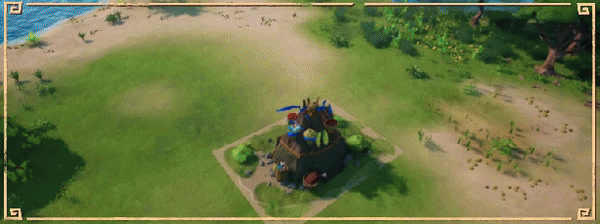

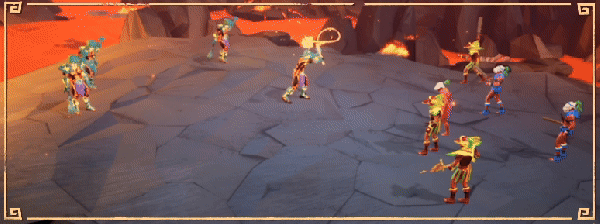
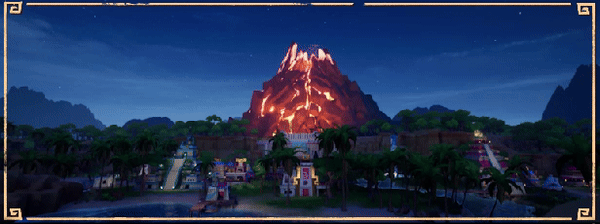
It has cozy elements?
As I mentioned at the beginning, the experience you get from this game when you’re playing alone is not the same as in co-op mode. Picking a singleplayer option definitely maintains the challenging nature of the game, even though you get access to a wider range of actions, ensuring the prosperity of the city becomes pretty difficult. However, it’s the cooperative system that makes this title stand out amongst other productions in this genre.
I really enjoyed how the game adapted to having two players, and even encouraged them to reach a consensus: for example when defining each other’s responsibilities, you have to agree on which buildings, resources, and technology trees you’re assigned to, and then also make sure that the other person benefits from your contribution and vice versa. This fresh twist on a multiplayer feature definitely made the whole gameplay more dynamic and absorbing – no wonder it’s treated as the game’s primary attraction.
While I was playing, I learnt that one of the participants of the playtests provided the team with an interesting observation: that The Whims of the Gods has qualities of a cozy game. While this might not be the first thing that comes to mind when you’re struggling with overcoming challenges (especially when your inhabitants are dying – not really something you expect from cozy titles), I agree that the overall atmosphere of the game has some casual feeling to it. With the vibrant and colorful setting, relaxing sound of a waterfall and a rhythmical gameplay, I can totally see somebody getting into the swing of it for hours.




Definitely worth keeping it on your radar
Reaching the conclusion, this build of The Whims of the Gods offers a genuinely strong and enjoyable experience. And, more importantly, it is a fully functional version: no bugs, no crashes, no major technical difficulties, which is worth pointing out given that the issues reported during the second playtests have already been fixed. Although, there is still a room for improvement: the instructions during later parts should be more precise, the notifications were appearing even though the residents were in the middle of taking care of these matters, and at some points there was no animation.
However, those things didn’t affect the overall experience with this game, which I believe grows on you with every playthrough – not only you get used to the mechanics and complete the tasks faster, but also it’s easier to notice the details that you might’ve missed before (like the fact that you can see every inhabitant’s name in their hut, which is kind of cool).
I’m absolutely looking forward to seeing how the auto-battler combat will work and in which direction the game will be heading storywise – the volcano and multiple endings bit does sound pretty promising. Talking about promises: while there is no exact release date yet, there’s a high chance that we’ll receive the full game sometime in Q3 2025. And as far as it’s going now, I can assure you: it’ll be worth the wait.


